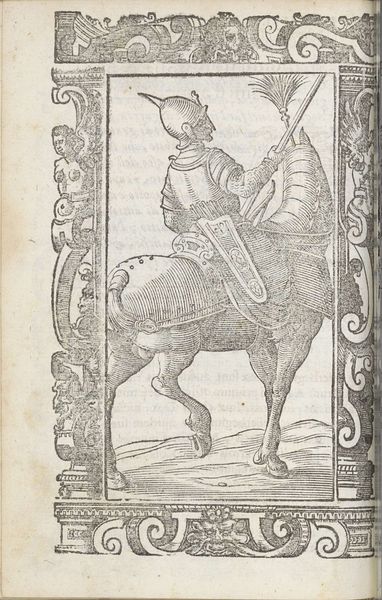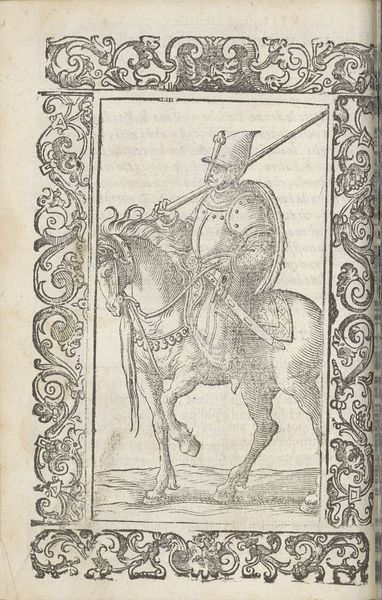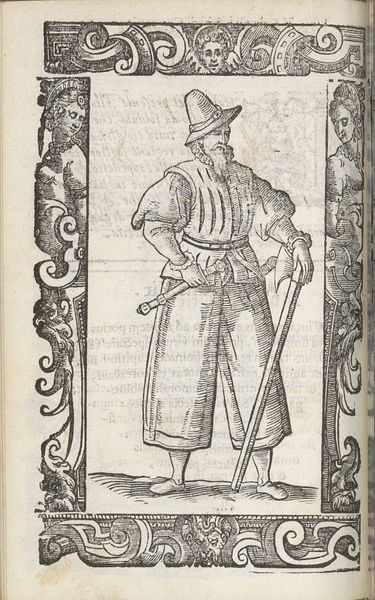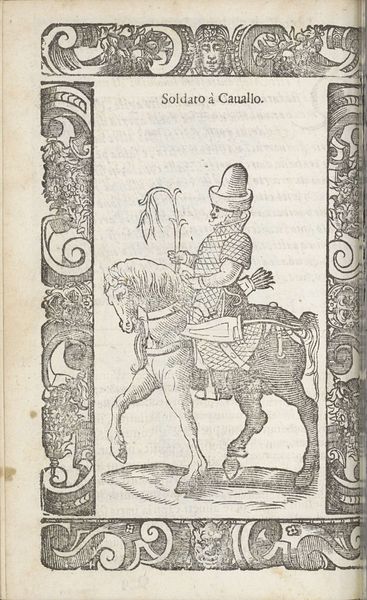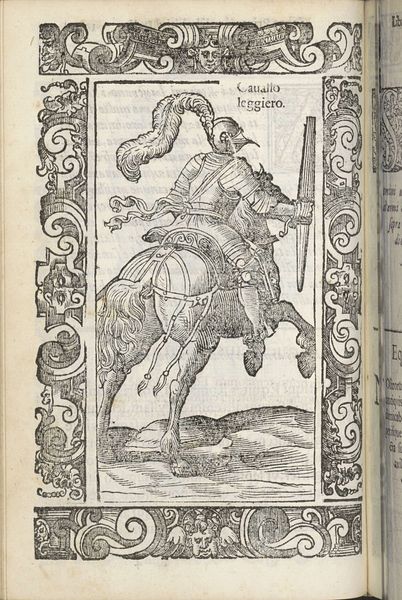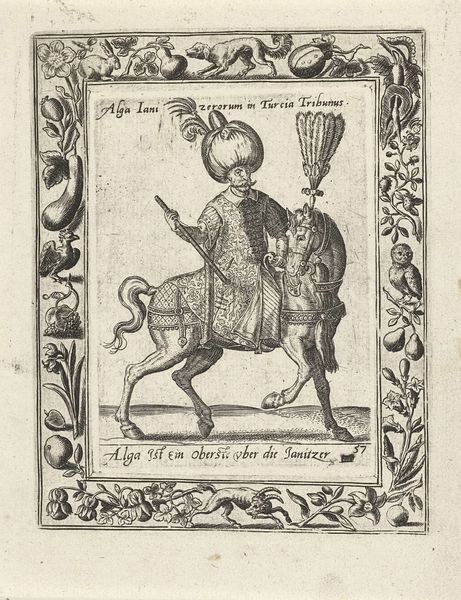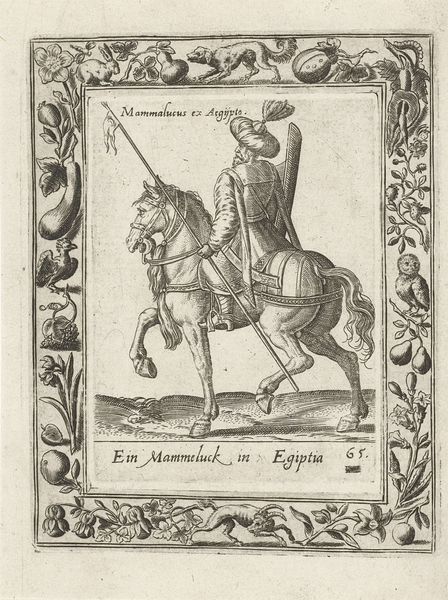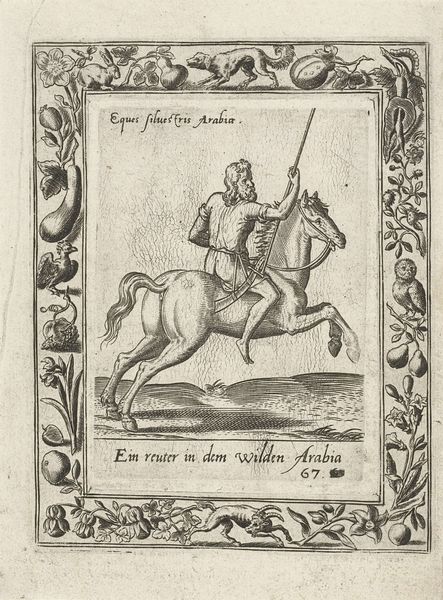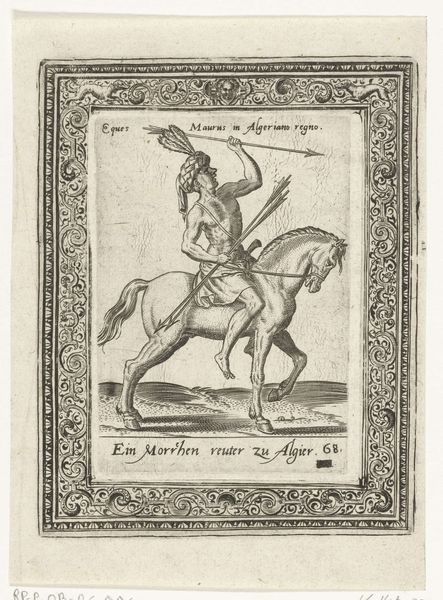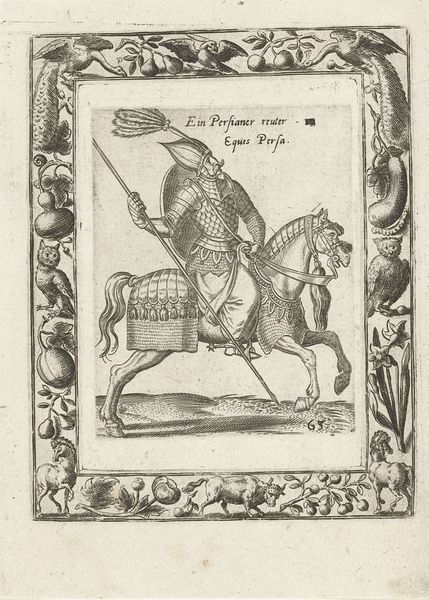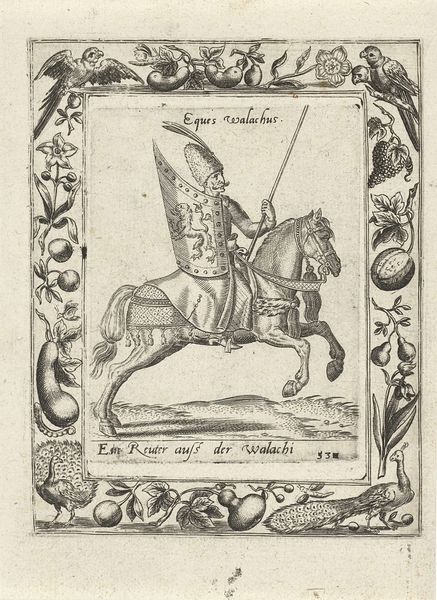
print, engraving
#
portrait
#
pen drawing
# print
#
mannerism
#
genre-painting
#
engraving
Dimensions: height 167 mm, width 125 mm
Copyright: Rijks Museum: Open Domain
Curator: This intriguing engraving is "Cadil Eschier," created around 1598 by Christoph Krieger. Editor: Oh, instantly, it feels… historical, naturally, but there's this slightly bewildered look on both the rider and his mount! Makes you wonder what they’ve just seen, or are about to. Curator: Well, let's consider the context. Krieger lived during a time of increased fascination and interaction between Europe and the Ottoman Empire. This print would likely have been circulated as part of a series depicting Ottoman figures. "Cadil Eschier" refers to a high-ranking judge, and the style aligns with Mannerism which reveled in elegance and a touch of the exotic. Editor: "Exotic," precisely! But Krieger’s depiction feels less like reverence and more like... well, look at the proportions! The rider is so puffed up and important in his garments and headdress, contrasted to that slightly malnourished donkey… almost comical. Curator: These depictions also reflect power dynamics. By visually categorizing Ottoman figures, Europeans asserted a sense of control through representation. Editor: I get that, but there's also this weird little detail of faces hidden in the bordering vines on either side! Makes the piece more lively. This wasn't just a sterile report; there’s a clear artistic imagination at play. Krieger obviously isn’t just trying to show you the details. He is thinking about what details will carry meaning, too. Curator: Krieger also used line work masterfully for an engraving, allowing details to jump out against all the text, thus appealing to a literate, and likely aristocratic, audience. The goal of the prints of this period would have been educational as well as aesthetic, offering a window into a world many Europeans would never see. Editor: Exactly. I can’t get over the texture of the horse’s body, actually. Curator: It's amazing how detailed that print is. Seeing such an elaborate composition compressed onto such a small scale really gives insight into a turbulent era between empires. Editor: And it reveals a whole load about how different people regard themselves, and each other. It's less a photograph, and more of a dream of power… of difference.
Comments
No comments
Be the first to comment and join the conversation on the ultimate creative platform.
